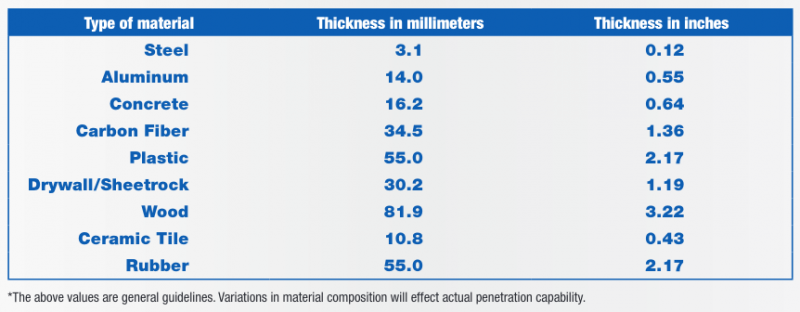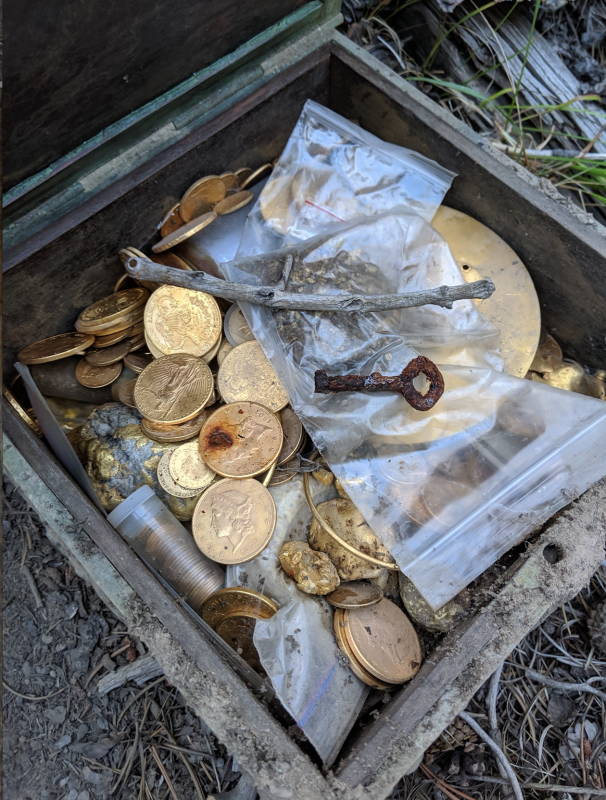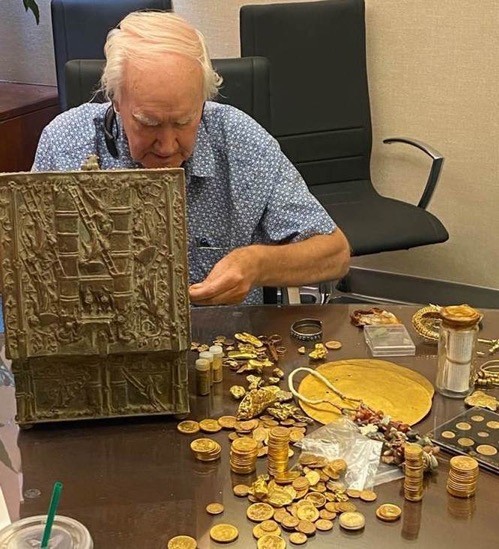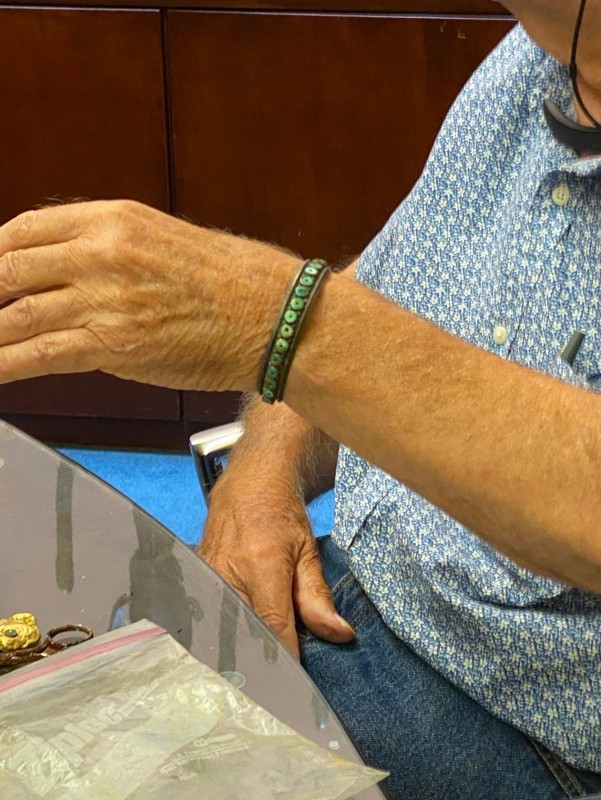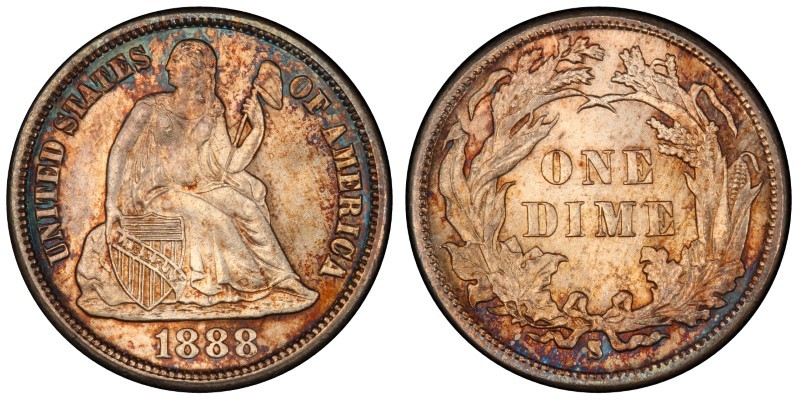-
Posts
5,792 -
Joined
-
Last visited
-
Days Won
12
Content Type
Forums
Detector Prospector Home
Detector Database
Downloads
Everything posted by GB_Amateur
-

Eq 600 5 Khz Crushing Multi On Depth
GB_Amateur replied to CaptainCoinSpill's topic in Minelab Equinox Forum
That's a pretty high discrimination threshold. EMI reports (i.e. the erratic sounds) can be TID dependent, so possibly you were just hiding it with your discrimination. There are several nice tone features on the Equinox that aren't found on many detectors, and particularly detectors most of us have cut our teeth on over the years. One of these is adjustable tone *volume*. What many of us do is eschew the discrimination threshold completely and use either 5 tones (my choice) of 50 tones. In both cases you can turn down the volume on the low end (non-ferrous end, iron end -- the negative TID numbers) so they they just kind of quietly grunt in the background. This has a lot of advantages, but I think one of them might expose the problem you were (potentially) having -- silent EMI hidden by too high of a discrimination threshold. I've done well hunting with sensitivity set at 18 (also 17) so if you have to live with that you should still do well. Another thing which can quiet EMI is lower recovery speed. I use 5 typically, which is the default for Park 1. Some use 4 and others even lower, although you need to adjust your swing (and your ear) as you go to low numbers, let's say below 4. Operating frequency choice can be affected differently by EMI, since a lot of EMI is narrow band (tight frequency range). Although Minelab won't say, many people have done spectral analysis which seems to indicate that multi-frequency transmits a low frequency (near 5 kHz) and a high frequency (upper 30's kHz) so if your EMI is being transmitted close to one of those then multi-frequency will be noisy whereas the right choice of single frequncies may be quiet. As usual, start with the settings you want but adjust as necessary. You mention ridiculously trashy parks. Are the trash targets aluminum, iron, hot rocks,...? My old parks have iron either because of razed buildings where they left lots of nails or because the land was previously used for agriculture or industry with associated structures, fencing, etc. My feeling is that iron is the worst, but aluminum (pull tabs, can slow, screw caps) can also be quite annoying in old picnic areas. Sometimes when the iron trash is bad it may help to run lower sensitivity as iron seems to get worse (relative to desirable targets getting better) with higher gain. We all want to go as deep as possible and sometimes it seems like a badge of machismo people flash when they say how high of gain/sensitivity they operate. But it's not a linear scale by any means (i.e. turning down sensitivity by a factor of two doesn't decrease the depth attainable by a factor of two) and sensitivity is one of those things that can be optimized for the site and the targets you seek. -

White’s Electronics Done After 70 Years
GB_Amateur replied to Steve Herschbach's topic in White's Metal Detectors
Not a good time to lose your job. I feel especially bad for the White's employees. This in some ways is the tip of the iceberg -- a wave of things to come, maybe not in the detector manufacturing world, but what is their share of Gross Global Product (GGP)? And, yes, much bigger companies have already gone under the last few months. If you've been listening to economists this kind of thing shouldn't be a surprise. But it seems politicians are louder, bigger bullies -- another example of the squeeky wheel getting the grease = listening audience. By the same token, why would a solvent company want to take the risk of buying out a failing company in a market that is potentially soft industry (leisure activity being part but not all of the space, although most of White's?) in this depression? FT, Garrett -- they have their own detectors to sell. Intellectual Property could easily be an exception, I get that, but besides the Goldmaster 24K which has stiff competition anyway, who has been lining up to buy White's detectors lately? I still really like my TDI/SPP and especially my Bullseye TRX. Just hope they hang in their because if they go on the fritz there may not be a fix.... There are some cheery thread topics (e.g. the Fisher Impulse) here right now, but this sure isn't one of them. -

New Tool For The Cache Hunter
GB_Amateur replied to Mike Hillis's topic in Metal Detector Advice & Comparisons
I misunderstood your original excitement. I see now you really do want an imager. Here's quick-and-dirty Back-of-the-Envelope (BoE) approximation. The brochure (your link) has a table for the penetration depth in various materials which I reproduce here: Fortunately (according to a Google search) the specific gravity of dirt is around 2.65, which is quite close to pure aluminum at 2.7 with its common alloys typically 2.8 --> 3.0. Another nice thing is that with the energies of the X-rays in this device, materials made up of low atomic number elements, which Aluminum, Oxygen, and Silicon all qualify, as do plant matter constituents that might be in the dirt, other attenuation processes that depend upon more than just density aren't relevant. What I'm saying is that density alone is the dominant component of penetration depth. Unfortunately the table says only about half an inch penetration through aluminum so unless the soil is considerably less dense (in which case you can possibly find another match in the table) I don't think you can peer much deeper into the ground than 0.5 to 1 inch. -

New Tool For The Cache Hunter
GB_Amateur replied to Mike Hillis's topic in Metal Detector Advice & Comparisons
I scanned the brochure and it looks to be an X-Ray imager only -- that is, no spectroscopy to identify elemental composition. -
I downloaded these photos from the site I posted above. First photo appears to have been taken at the hiding/recovery site: Second photo shows Forrest going through the chest recently (last week?): 3rd photo shows Forrest trying on a silver bracelet from the trove: Lots of talk in the commentary of the page I linked about things like sentimental meaning of the bracelet, meaning and condition of the key, "where are the jewels?", what the apparently rusty scissors was for, etc., etc. You can read all of that there. I started to but it's a long list of comments.
-
There is some speculation in the reader commentary page of where that photo was taken. Some say it looks like it could be in a bank's safe deposit area. That would indicate he flew to meet up with the finder and subsequently saw the treasure (when photos were taken). I have to run but when I get back in ~15 minutes I'll see if I can post those photos here.
-
Here's a webpage shown in the sidebar of the 'newspaper' article Mitchel posted. You can draw your own conclusions, of course, but it seems to be a pretty informed site with apparent input from Fenn himself. It's way more interesting than the article, IMO. No one will ever silence the conspiracy theorists. Do we really care what they think anyway? One interesting thing is that a go-fund-me page has been set up with a goal of half million dollars in the name of one of those who died. (That's from the article Mitchel linked.) It's getting there, all the way up to $315 (no, I didn't forget to add zeroes).
-
I wonder how far along First Texas is with the Gold variant. I suspect most of us would prefer it to be released fairly soon (say within a year) with the features and properties already in the works than have to wait an extra year for mods. All just WAGging. OTOH, it can't hurt to ask/request/beg(?). Fisher (both before and after First Texas acquired them) has created some detectors which not only rewrote the book but still are the book -- the Gold Bug II's performance on the tiny gold and the T2/F75 in the ergonomics' properties are a couple examples. If they give these new Impulses as much attention in the ergonomics aspect as they did the T2/F75, that would be well received, IMO. One improvement that, IMO, would enhance even the T2/F75 would be if the counterweight module could be user repositionable along the shaft. That would allow fine-tuning for different weight coils. To be clear, I'm not asking for the T2/F75 to be redesigned but rather to incorporate this adjustability to the Impulse. Then again, maybe Fisher has already thought of this. I think the same engineers who did the ergonomics for the T2/F75 still work there.... They already have that 'Oscar' in the trophy case but room for another!
-
Is the $500 pricetag (with options and accessories listed) for the VX3 or V3i? When I was watching Ebay prices (not in the last month, though) it was typical that the VX3 would sell about $200 less than the V3i. Some of that may have been provided accessories, but like used automobiles those things tend to get more stronly depreciated than the main unit, in my experience.
-

Eq 600 5 Khz Crushing Multi On Depth
GB_Amateur replied to CaptainCoinSpill's topic in Minelab Equinox Forum
Might be worth doing an air test. If it's the ground that is preferentially favoring 5 kHz over Multi-frequency then that should disappear in air tests. -
You mean like when someone mildly disagrees with something they've posted on this site? Unfortuntaely I have this weakness -- I'm sometimes wrong and when that happens I have both the wisdom the guts to apologize. Apparently I was wrong about the Tennessee statewide ban. I don't recall anyone speaking up contradicting that when it did come up previously, but I might have missed that part of the thread. It did (and still does) seem like one of those "something sounds fishy; better do some fact checking here". Sorry to all for propogating a false statement. Pretty sure the rest of what I said is true. If not, I don't have a problem with someone pointing out my errors in a civil manner. In fact I prefer it, but with that qualification of civility.
-
I think that map only refers to metal detecting in state parks -- at least that is what the heading/sentence directly above it seems to indicate. Again, I could be misinterpreting what 'state parks' mean. I've always used it in reference to parks that the state operates, not parks operated by other government agencies -- particularly municipalities.
-

Iron Grunts Underwater On Non Ferrous Finds Nox 800
GB_Amateur replied to LukeJMG1986's topic in Minelab Equinox Forum
Since there are now two Iron Bias scales (independent -- user gets to decide which one) it might help if you told us which you are referring to: FE or F2. I don't water hunt so my replies may not be relevant to what you are experiencing; thus I'll refrain. I will be posting soon what I've been finding by experimentation in the field, playing with the F2 settings. I may wait until I get more testing done, though. IMO it's a very confusing feature. I'll leave it at that. -

CTX Built To Be Expensive?
GB_Amateur replied to Tom Slick's topic in Metal Detector Advice & Comparisons
🤣 -
But you didn't mention the man eating snakes? Nice find, Joe, but I hate the damage water can do. I noticed hunting a local drained (freshwater) lake that the coin discolation/deterioration seemed much worse than my typical park finds. But I didn't find any silver, just copper alloyed coins. It still counts!
- 9 replies
-
- minelab equinox
- coin detecting
-
(and 1 more)
Tagged with:
-
I wonder if we're seeing the East/West effect native gold detectorists know all too well -- land East of the Rockies is basically private and public properties (meaning parks and forests) tightly restricted. West has a lot of federal lands (BLM and National Forest) which tend to be open to recreational gold detecting. As some examples, a friend in Louisville asked me to come down and search an old park (Louisville's been around since the late 1700's) but when I looked up their city park regulations it was stated there explicitly that metal detecting was not allowed. My sister belongs to the Eureka Club in Denver and there are many suburbs there where metal detecting is either completely forbidden or quite resticted on public properties. One of them (I think it's Wheatridge) allows detecting but you're required to get an annual permit (that part isn't so bad) but also you can't dig within 50 ft of a tree! Well, I get it that they don't want you to damage the roots... I've heard of parks where detecting is allowed but digging isn't! Others restrict the size & shape of recovery tools, which is a fair compromise, IMO. I seem to recall a post here a while back saying that it's a state law in Tennessee that metal detecting is forbidden on public properties. I may have misunderstood but interpreted that to include municipal public properties as well. That would be extremely discouraging if true. (Can any of you Tennessee posters confirm/clarify?) I agree with you Tom about travelling around and assuming detecting is OK as long as you read the park rules signs (typically posted). Then if someone objects you can at least indicate you were conscientious -- checking the rules. Even if they are correct, you should at least get off the hook, having made a concerted effort to comply.
-
Is the area you were detecting known for native copper? I was under the impression that is something quite unusual.
-

Silver Today - 1888 Seated Liberty Dime
GB_Amateur replied to CmonNow's topic in Metal Detecting For Coins & Relics
Those Brits were quite inventive and industrious (still are). Gosh, you've reminded me of my younger days when we had to use one of those human propelled reel-type mowers at my grandparents' house, and to make matters worse it hadn't been sharpened since (what seemed like) 1830! They probably hadn't greased it since then either. I recall the bald tires just slid along the ground. Yes, I was thinking power mowers but stand corrected -- some people did try to make things look trim and fit back then, too. Even with the dings your dime is still a pretty display piece. The fact that it shows hardly any wear adds a lot to its beauty and intrigue, IMO. Hope there are more exciting finds out there for you. Wish I could hunt a fairgrounds. Since I first saw a metal detector I thought "wow, fairgrounds are likely overloaded with old coins!" Someday maybe I'll get a chance to test that hypothesis. Every county here in Indiana (92 of them) has a fairgrounds AFAIK, and have been putting on those fairs annualy since way back when all dimes, quarters, etc. were silver. Maybe many have been searched by now, but access tends to be very limited so maybe not all of them. -

Found This Stuff My First Year Detecting
GB_Amateur replied to TreasureHunter5's topic in Metal Detecting For Coins & Relics
The number of, and particularly, density of stars on the shield changed during 1917. So you can ID the earlier variety by counting those, especially when the date is missing. I agree, yours is Variety 2, which started partway through 1917 so both varieties were minted that year. As far as the date being visible after 1925, although they did make an improvement it still wasn't great, so even some of those will have lost their dates. Years ago there was a chemical you could buy which supposedly would ghost the date of dateless silver coins like the SLQ and Walking Liberty Half. I don't know how well it worked. There was also a different chemical for nickels (for Buffalo nickels in particular) and I bought some and it worked. But recently I bought some again and it failed miserably. Restoring dates in this way is fun but for the most part doesn't add any value over bullion. -
Good questions but none of them has precise answers. Curb strip ownership/responsibility varies from place-to-place AFAIK. If it's in front of a residence my default view is that you should get the home owner's permission. In front of a business, likely still the same but we're starting to move down the slope, particularly because a business is less likely to be possessive (obviously lots of exceptions). If it's in front of an empty lot or (non-municipal) parking lot then my approach has been to be discreet but otherwise forge ahead ("ask for forgiveness, not permission"). If it's municipal property then I treat it as I would other municipal properties, with respect but otherwise, "I pay my taxes..." Exception is that if your municipality prohibits metal detecting or digging. You should be able to find that on websites. Mine doesn't, fortunately. When it comes to private property, I'm even less experienced than with curb strips in general. Best is to just ask permission and then see if they request sharing, damage/injury waiver, etc., go from there. You can find canned forms online or in books. Agreements (particularly sharing) is negotiable. My standard approach is to point out that what I'm interested in are old coins. Any artifacts/relics I find on someone's property gives them first dibs and I'll carry off what they don't want. An exception (no matter where it's found) is if you find a valuable item for which you can identify the owner -- such as a class ring. Not everyone treats this the same way, but a lot of us feel that returning it is best if the owner can be found. Other jewelry, though, like wedding bands without owner name or initials inscribed -- unless someone has asked you to search for it then it's "finders keepers". Private property permissions are in general the best hunting grounds in 2020 given that most public land (not counting BLM or National Forest in USA) has been detected pretty hard in the last 30 years. But in my experience permissions are still hit-or-miss, just like the parks and schools. My advice -- do both!
-
Welcome, Jay! Looks like you've already assembled quite an arsenal. Any captured prisoners (i.e. their photos) you care to share? Either way, you've come to the right place.
-

Silver Today - 1888 Seated Liberty Dime
GB_Amateur replied to CmonNow's topic in Metal Detecting For Coins & Relics
Excellent find! Seateds are tough in much of the country, maybe the entire country. (I don't have one yet.) That ding to the rim is unfortunate. The condition otherwise looks top notch. It certainly didn't see much wear before it was lost, waiting > 100 years for you to swing your detector over it. I don't think they had lawn mowers back then, BTW. 😁 Sometimes coin in parking areas with gravel or crushed limestone just get beat up when cars drive over them and pack down the rocks, but that tends to show up all over the coin and yours looks like just that one rim ding, at least from the obverse view. Did you check for a mintmark (I stole this image off of PCGS). Note the 'S' (San Francisco) under the wreath on the reverse: Looks like there isn't much value difference between the 'plain' (Philadelphia, so no mintmark) and -S even though there were more than twice as many plains as -S's minted. No other mint made any that year. Regardless, excellent find. -
Nice, no nonesense ("call 'em as I see 'em") review, Steve. I'm not trying to add more work to your plate as I know you are motivated to give this new detector the best workout you can. Just wondering, since you've made mentions of parallels between this detector and the White's TDI, will you be trying it out for coin hunting as you detailed years ago for the TDI? Do you expect better, worse, or about the same performance in that capacity? 7 microsecond minimum (compared to 10 microsecond) delay is one big difference but I suspect that won't add any coins (well, maybe our tiny nickel 3 cent piece...?). Still, will there be better discrimination against rusty, bent nails? And there's always almost everyone favorite wish -- deeper. Hope your cataract surgery #2 goes smoothly and you're back swinging soon (with renewed ability of a 15 year old to spot those sun-bakers 😏).
-
Welcome phd_angel! You're off to a good start -- joining detectorprospector.com. You ask good questions and you may get different answers, but that's the richness of life. Here are mine. 1. Well, you seem to have narrowed it down to two detectors. When you say "I'd like to find gold..." do you mean naturally occurring gold or processed gold (such as jewelry) or ?? And if naturally occuring, in the Midwest or do you have plans to travel west soon? Actually your answers probably aren't relevant between these two as the Fisher F22 is low single frequency and thus primarily a coin detector with abilities in jewelry and relic detecting. The Vanquish is multi-frequency which can handle those but likely be better for naturally occurring gold and even saltwater hunting (but it's not waterproof so keep that in mind). You mention "excessive detecting regulations and hostile people". IMO, although it's always good to be aware of possible issues, I don't think you should dwell on these. If you're detecting in parks you should look at their websites and also read any rules posted at the parks themselves. If it doesn't prohibit detecting or digging then you should be fine. 'Hostile people' are extremely rare. First off park users (and employees) recognize what you are doing -- lots of detectorists around. Secondly, as long as you respect the property (e.g. carefully fill your holes, carry away any trash you find, whether metal or not, whether dug or not) then you are actually improving the site and should be confident in your activities. If someone questions you, show them the trash you are cleaning up and emphasize you fill any holes dug. 2. IMO, buying the copycats just encourages illegal or unethical behavior. It's true that the originals cost $100-$150 new, but you will feel better about yourself if you go that route. Those companies invest a lot of money developing those products and the copycats are parasites who feed off that research without any investment or risk on their own. 3. Metal detecting attracts a wide range of interests. Allow it to take you to those areas that you are interested in and enjoy. Everyone who respects the hobby and the properties they hunt are welcome to carry on further as little or as much as they choose. I enjoy the history (including numismatics) but many just enjoy finding treasure that has been lost, and go no further. They are just as much a welcome part of the hobby as anyone.
-
Nice collection of finds and they look sharp after cleanup. What is that large disc shaped metal piece with what looks like S S Co in the middle? Have you figured out what it says around the rim?


